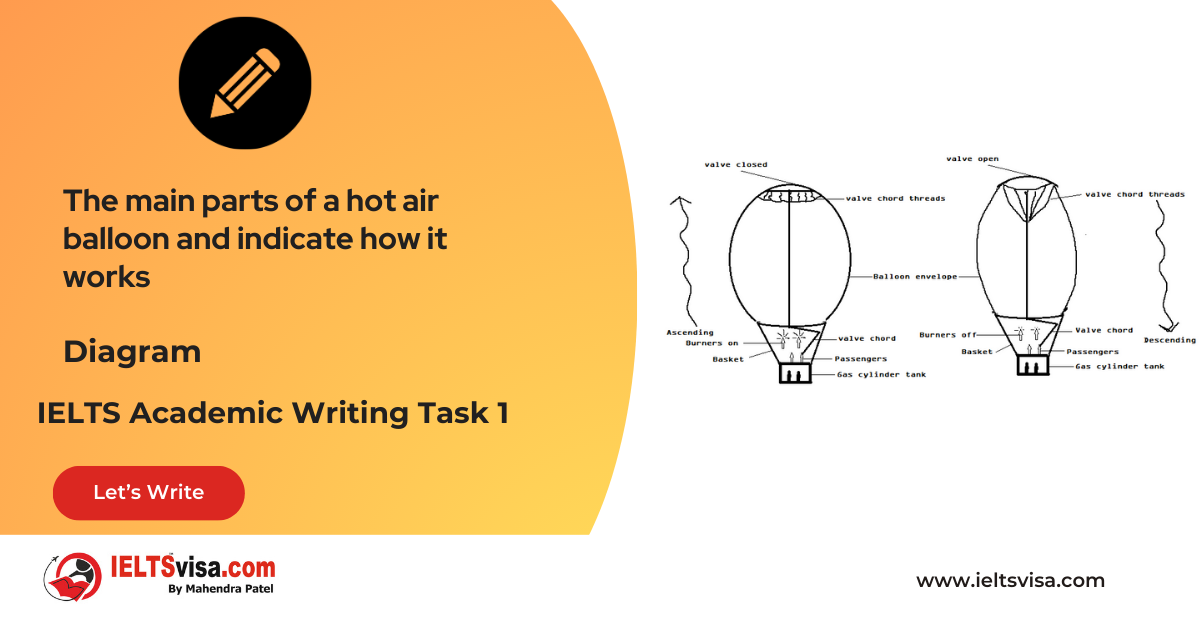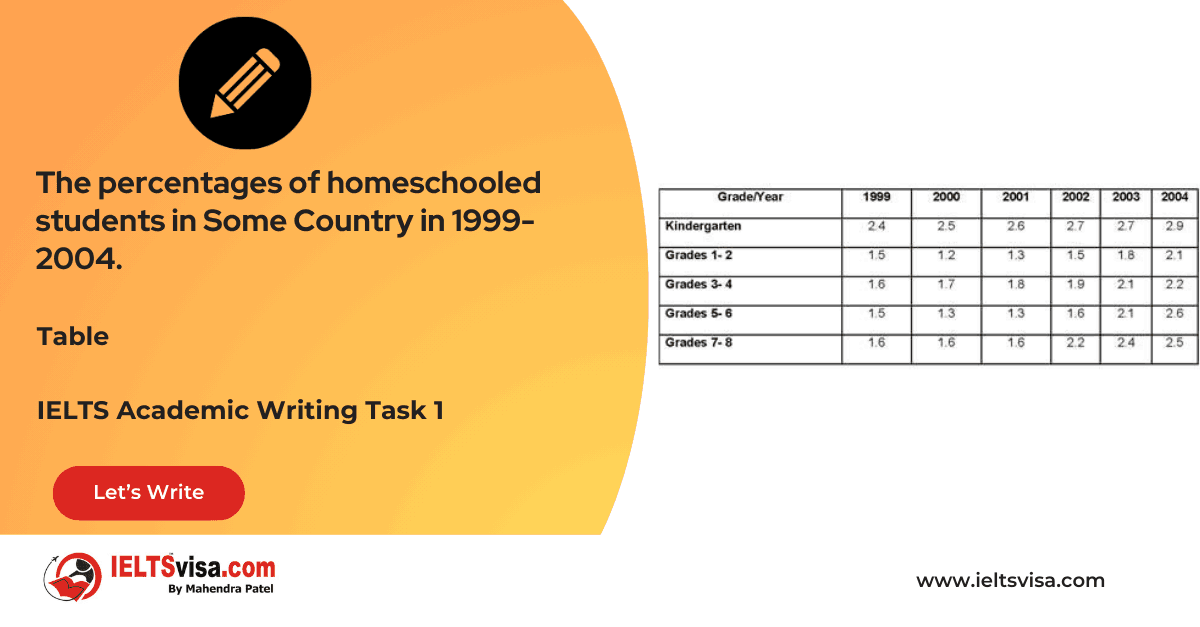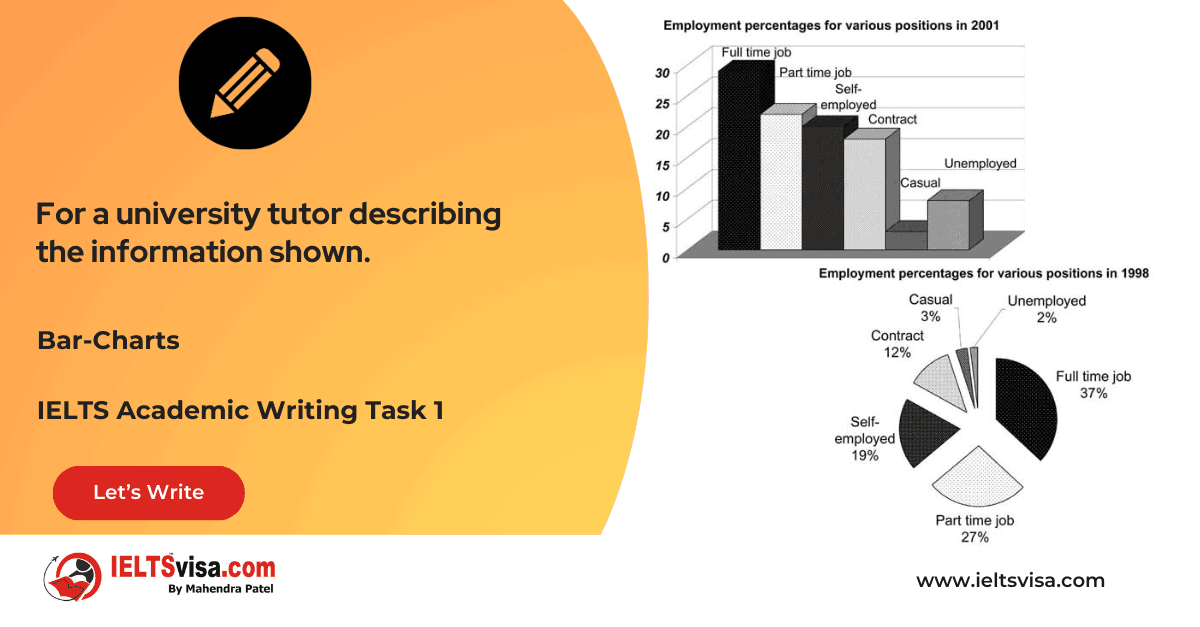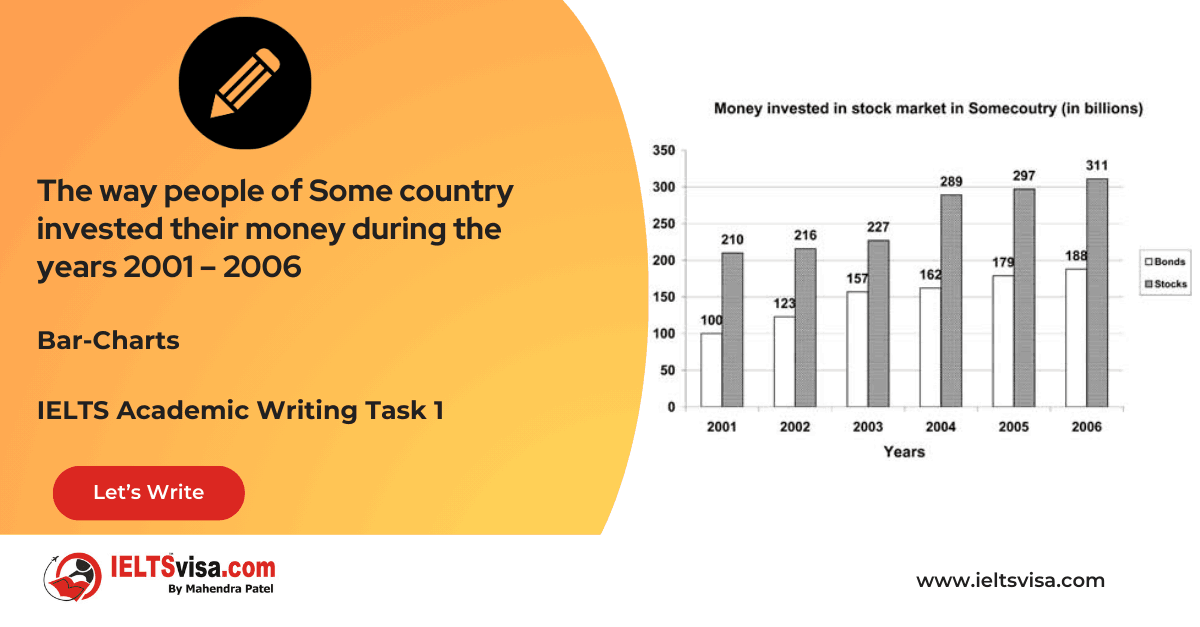Outlines paper and plastic cup production at a factory over the period of one year
IELTS Academic Writing Task 1 - Bar Graph
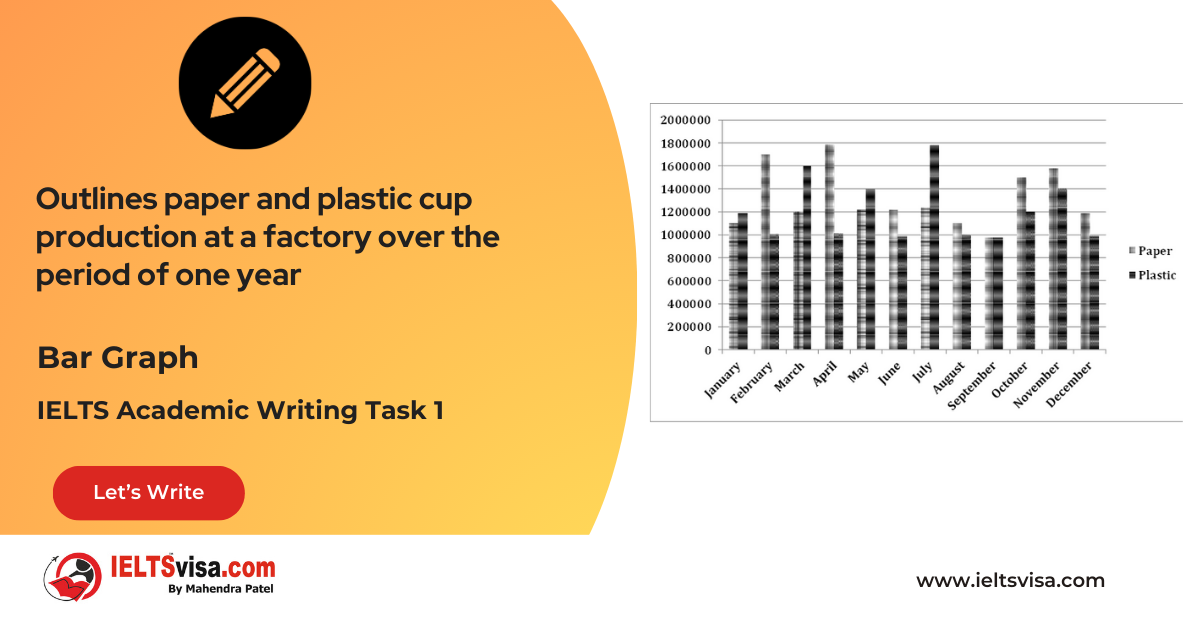
IELTS Writing Task 1 Question
The graph below outlines paper and plastic cup production at a factory over the period of one year. Summarise the information by selecting and reporting the main features and make comparisons where relevant
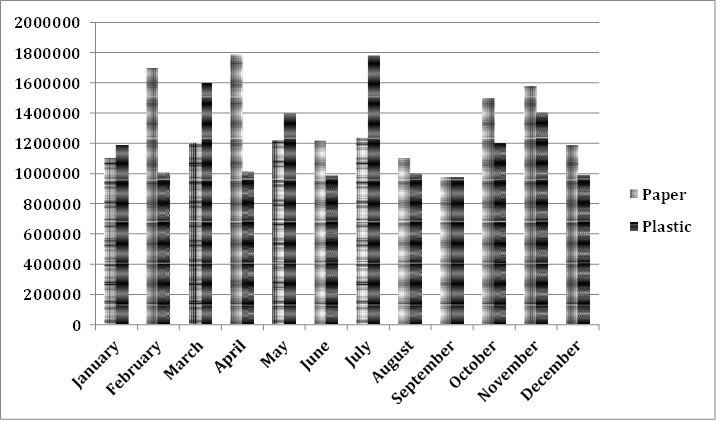
Common Questions for the Bar Graph
1. Graph Type: Bar Graph
2. Title: Production of Paper and Plastic Cups Over One Year
3. What are the units of measurement?: Number of cups (in millions)
4. Who: Factory producing paper and plastic cups
5. When: One year (January to December)
6. Where: Factory setting (unspecified location)
7. Topic: Monthly production levels of paper and plastic cups
Comparison Showing and Trends
Comparison 1: Paper Cup Production Trends
- Details:
- Peaks in February (1.7 million) and April (1.8 million).
2. Drops steadily from July (1.2 million) to September (1 million).
3. Ends the year at just below 1.2 million cups.
Comparison 2 : Plastic Cup Production Trends
- Details:
- Begins at 1.2 million cups in January, fluctuating throughout the year.
2. Lowest production levels in September (1 million).
3. Highest production was observed in July (1.75 million).
Sample Answer
The bar graph illustrates the monthly production levels of paper and plastic cups at a factory over one year.
Overall, both paper and plastic cup production varied throughout the year, with September being the month with the lowest output for both types of cups. Peaks in production were more pronounced for paper cups than for plastic cups.
Paper cup production began at approximately 1.1 million units in January and rose to a peak of 1.8 million in April. After maintaining a steady output of 1.2 million from May to July, production gradually declined, reaching its lowest point of 1 million in September. However, there was a rebound to 1.5 million in October, and the year ended with a production figure of slightly below 1.2 million units.
Plastic cup production started at 1.2 million in January and demonstrated significant fluctuations. The lowest production levels were observed in February, April, June, August, September, and December, all hovering around 1 million units. Peaks in production occurred between these months, with the highest output of 1.75 million cups recorded in July.
Top 27 Vocabularies
| Vocabulary (type) | Type | Meaning | Synonyms | Examples |
|
Fluctuation |
Noun |
Irregular rising and falling in amount |
Variation, Instability |
Fluctuations were observed in plastic cup production. |
|
Peak |
Noun |
The highest point |
Summit, Zenith |
Paper cup production peaked at 1.8 million in April. |
|
Gradual |
Adjective |
Happening slowly over time |
Steady, Progressive |
There was a gradual decrease in paper cup production. |
|
Rebound |
Verb |
To recover or rise again |
Recover, Bounce back |
Production rebounded to 1.5 million in October. |
|
Output |
Noun |
The amount produced |
Production, Yield |
The factory’s output varied throughout the year. |
|
Illustrates |
Verb |
Explains or shows clearly with examples or visuals |
Depicts, Represents, Portrays |
“The bar graph illustrates the production levels of cups.” |
|
Monthly |
Adjective |
Occurring every month |
Periodic, Recurring |
“The graph tracks monthly production levels.” |
|
Production |
Noun |
The process of creating or manufacturing something |
Manufacturing, Creation, Output |
“Paper cup production rose in April.” |
|
Varies |
Verb |
Changes or differs over time |
Fluctuates, Differs, Alters |
“Production varies throughout the year.” |
|
Output |
Noun |
The total amount of something produced |
Yield, Product, Result |
“The factory’s output peaked in July.” |
|
Pronounced |
Adjective |
Strongly noticeable or obvious |
Prominent, Marked, Distinct |
“Peaks in production were more pronounced for paper cups.” |
|
Demonstrates |
Verb |
Clearly shows or proves |
Displays, Reveals, Indicates |
“Plastic cup production demonstrates significant variations.” |
|
Maintained |
Verb |
Kept at a consistent level |
Sustained, Continued, Preserved |
“Production maintained a steady output from May to July.” |
|
Declined |
Verb |
Became lower or less in amount |
Decreased, Dropped, Reduced |
“Production declined sharply in September.” |
|
Lowest |
Adjective |
The smallest amount, degree, or level |
Minimum, Bottom, Least |
“September had the lowest output for both cup types.” |
|
Significant |
Adjective |
Large or important enough to be noticed |
Noticeable, Substantial, Meaningful |
“Significant fluctuations were observed in plastic cup production.” |
|
Fluctuated |
Verb |
Rose and fell irregularly |
Varied, Wavered, Oscillated |
“Plastic cup production fluctuated significantly over the year.” |
|
Steady |
Adjective |
Regular and consistent |
Stable, Constant, Uniform |
“Paper cup production remained steady during the summer.” |
|
Approximately |
Adverb |
Close to but not exact |
Roughly, Around, Nearly |
“Production started at approximately 1.1 million units.” |
|
Decline |
Noun |
A decrease or reduction |
Drop, Downturn, Fall |
“There was a gradual decline in production during autumn.” |
|
Hovering |
Verb |
Staying close to a particular level |
Lingering, Staying, Remaining |
“Production levels hovered around 1 million units.” |
|
Reached |
Verb |
Arrived at a specific level or point |
Achieved, Attained, Hit |
“Production reached its peak in April.” |
|
Significant |
Adjective |
Having a noticeable impact |
Important, Notable, Meaningful |
“Significant changes occurred in the production levels.” |
|
Observed |
Verb |
Noticed or seen |
Witnessed, Detected, Recorded |
“Fluctuations were observed in plastic cup production.” |
|
Units |
Noun |
A single complete item or quantity |
Items, Pieces, Quantities |
“The factory produced 1.5 million units of paper cups in October.” |
|
Recorded |
Verb |
Documented or registered |
Logged, Registered, Captured |
“The highest output was recorded in July.” |
|
Gradual |
Adjective |
Happening in small steps over time |
Slow, Progressive, Incremental |
“There was a gradual decline in production levels.” |
|
Factory |
Noun |
A building where goods are manufactured |
Plant, Workshop, Mill |
“The factory specializes in producing cups.” |

Our Books
Master IELTS Speaking Part 1
IELTS Writing Task 1 Book
IELTS Writing Task 2 Book
Writing Task 1 Question Types
Practice IELTS Other Modules
IELTS Listening
The IELTS Listening test assesses how well you can understand spoken English in various contexts. It lasts about 30 minutes and is divided into four sections with a total of 40 questions. The listening tasks become increasingly difficult as the test progresses.
IELTS Academic Reading
The IELTS Academic Reading section assesses your ability to understand and interpret a variety of texts in academic settings. It is designed to evaluate a range of reading skills, including skimming for gist, reading for main ideas, reading for detail, understanding inferences, and recognizing a writer's opinions and arguments.
IELTS Speaking
The IELTS Speaking test assesses your ability to communicate in English on everyday topics. It lasts 11-14 minutes and consists of three parts: introduction, cue card, and a discussion based on the cue card topic.
IELTS General Reading
IELTS General Reading tests your ability to understand and interpret various types of texts. Here are some key areas and types of content you can expect to encounter in the reading section, along with tips for effective preparation.
IELTS Academic Writing Task 1
In IELTS Academic Writing Task 1, you are presented with a visual representation of information, such as graphs, charts, tables, or diagrams, and you are required to summarize, compare, or explain the data in your own words.
IELTS General Writing Task 1
In IELTS General Writing Task 1, you are required to write a letter based on a given situation. The letter can be formal, semi-formal, or informal, depending on the prompt. Here’s a breakdown of the key components to include in your letter
IELTS Academic Writing Task 2
In IELTS Academic Writing Task 2, you are required to write an essay in response to a question or topic. Here’s a guide to help you understand the essential elements of this task
IELTS Exam Tips
To succeed in the IELTS exam, practice regularly, familiarize yourself with the test format, improve your vocabulary, develop time management skills, and take mock tests to build confidence.
Grammer for IELTS
Grammar is the foundation of effective communication in English. Understanding tense usage, subject-verb agreement, and sentence structure enhances clarity and coherence in writing and speaking.
Vocabulary for IELTS
Vocabulary plays a crucial role in the IELTS (International English Language Testing System) exam, especially in the Speaking and Writing sections. Here’s an overview of why vocabulary is important and how it impacts your performance
RECENT IELTS SAMPLES QUESTIONS AND ANSWERS
Task 1 – Diagram – A conference hall built in 1981 and planned for 2020
20:00 Start Pause Stop [df_adh_heading title_infix="IELTS Writing Task 1 Question" use_divider="on"...
Task 1 – Table – The percentages of homeschooled students in Some Country in 1999-2004.
20:00 Start Pause Stop [df_adh_heading title_infix="IELTS Writing Task 1 Question" use_divider="on"...
Task 1 – Table – For a university tutor describing the information shown.
20:00 Start Pause Stop [df_adh_heading title_infix="IELTS Writing Task 1 Question" use_divider="on"...
Task 1 – Bar-Charts – The way people of Some country invested their money during the years 2001 – 2006
20:00 Start Pause Stop [df_adh_heading title_infix="IELTS Writing Task 1 Question" use_divider="on"...
Task 1 – Diagram – Rainwater Harvesting and Conversion to Drinking Water in an Australian Town.
20:00 Start Pause Stop [df_adh_heading title_infix="IELTS Writing Task 1 Question" use_divider="on"...
Task 1 – Column graph – Percentage of Young People Enrolled in Universities in 2000 and 2007.
20:00 Start Pause Stop [df_adh_heading title_infix="IELTS Writing Task 1 Question" use_divider="on"...

